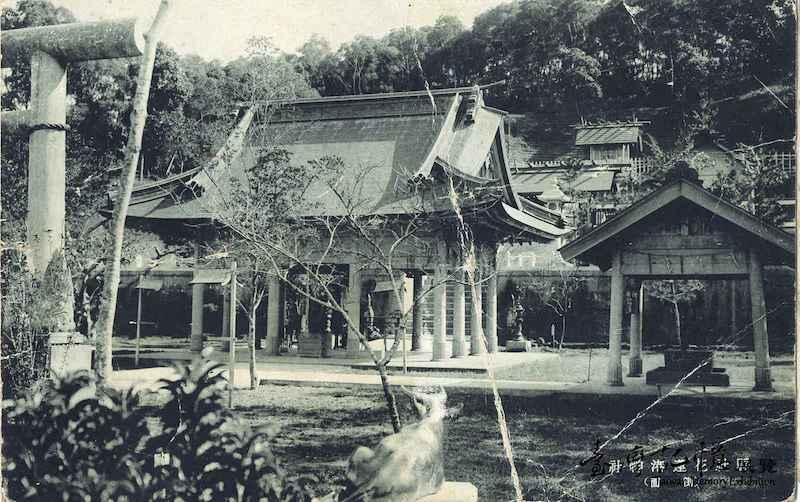Those who have watch Japanese drama will certainly be familiar with what a Japanese Shinto shrine looks like and perhaps might even be curious about its architecture and purpose. Actually, the vast majority of martyr’s shrines in Taiwan used to be Shinto shrines during the Japanese occupation. For example, the martyr’s shrine on the top of Meiluen Mountain in Hualian was the Shinto shrine for Hualian’s port.
The shrine was erected in 1915 and enshrines the Japanese goddess Amaterasu and the three gods of creation. The stately wooden pavilion and the symbolic gate (torii) once attracted countless reverenced gazes. With the change of political power after the war, the shrine was changed into a martyr’s shrine, and the gods that used to be worshiped were replaced with those who laid down their lives for the Republic of China. The elegance of the classic architecture was also replaced with more imposing cement structures.

The Shinto Shrine at the Hualian Port
- NCL Special Collection / Xie Ming-hai / Japanese Colonial Period (1895-1945) / 14.1×9.1cm / 《Visual Feast》


